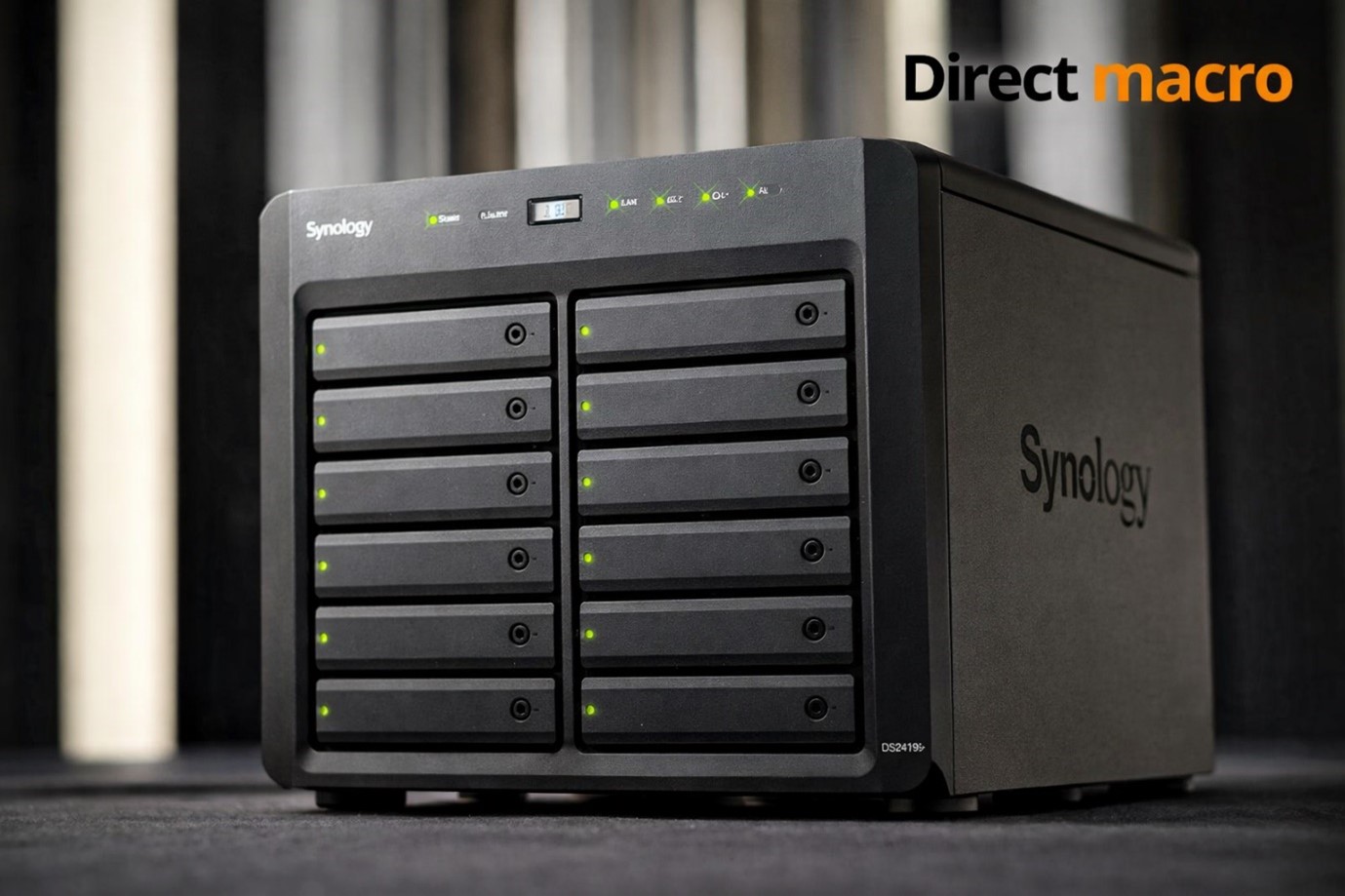External Graphics Card for Laptop: Benefits, Setup and Top Brands
In recent years, there has been an increase in the need for high-powered laptops with good graphics and gaming capabilities but their performance is limited by the majority that has built-in graphics cards. This is where an external graphics card for laptop or external video card for laptop comes in. If you want to improve your laptop’s graphical abilities, just plug in an external GPU which is a separate machine. The following blog post will provide some deep insights about different features of laptop external graphics cards and provide necessary information about how to choose one, install it; tune up its settings, utilize leading-edge products which can be found in markets today.
Introduction of External Graphics Card for Laptop
To improve the graphical performance of a laptop, it is advisable for a person to use an external graphics card for laptop, popularly known as an eGPU (external GPU), being a dedicated graphics processing unit. This enables users to connect this type of graphics card externally. By use of these devices, graphical performance abilities which are constrained in most cases due to their small size can be extended in laptops. These eGPUs are usually found within stylish housings having multiple access methods such as USB-C, Thunderbolt 3, and other proprietary solutions. This turns any laptop into a powerful workstation or gaming station. One can take advantage of the increased performance offered by a different GPU while preserving its laptop’s portability and comfort ability.
Read more: A Detailed Guidance To The Best Gaming Laptops Under $1500
Benefits of Using an External Graphics Card For Laptop

There are a number of benefits of utilizing an external GPU for laptops:
Performance
An important benefit is that graphics processing power has increased, a development which makes it possible to enjoy better games on big screens or run demanding applications such as video editing tools. Also, this change leads to more effective work on videos of high standard including renders for modelling as well as machine learning tasks.
Portability
External GPUs combine the portability of a laptop with the power of a desktop computer, offering the best of both worlds. Being able to connect and disconnect at will makes eGPUs perfect for creating a makeshift gaming or creative space, wherever you are.
Upgradability
It can be hard to increase the performance of connected GPUs or even prevent the factors against this improvement when the graphics card is already a dedicated one in laptops being part of their motherboards. Therefore, if there are advanced ways of protecting eGPUs from possible damages as well as getting better graphics cards, then having an external graphics card will ensure that your connections between these devices remains safe from any external influences that may decrease their efficiency over time.
Noise and Thermals
You can enhance your laptop’s thermal performance and reduce its noise level by shifting the graphics processing to an external device. Better performance and stability are obtained by keeping the graphics card working at ideal temperatures, which is made possible by the specialized cooling solutions found in eGPU enclosures.
Multi-Device Compatibility
You can share the external graphics card’s power between your laptop, desktop, and tablet with some eGPU enclosures that support multiple devices. Those in the creative industry and gamers who use multiple platforms can discover this flexibility, which is especially useful.
Extended Display Options
You can connect multiple screens to your laptop by using the extra display outputs which external graphics cards usually offer. In addition to offering a more complete gaming or creative experience, this extra area can significantly increase efficiency.
How to Choose the External Graphics Card for Laptop

When choosing the best external EGPU for Your Laptop, there are some of the main factors you should consider to ensure compatibility and optimal performance:
Connectivity
The most common connection interface for an external graphics card for laptop is Thunderbolt 3. It offers high bandwidth and supports data, video, and power delivery over a single cable. Make sure that both your laptop and the external GPU enclosure have Thunderbolt 3 ports, and check the Thunderbolt certification of your laptop to confirm compatibility. Subsitionally, some eGPU solutions use USB-C or established connections.
Graphics Card
The main part of the eGPU is the graphics card itself. Look for a model with a powerful and modern GPU which aligns with your needs and budget. When choosing a laptop external graphics card, consider the amount of video memory (VRAM) it offers. This will impact how well games work and how complex moments your apps can handle.
Enclosure Design
Enough power is needed for the graphics card inside the eGPU enclosure to function. Make sure the power supply unit (PSU) has enough power to support the graphics card by checking its wattage. Higher-end GPUs might require a larger-wattage PSU.
Power Supply
The graphics card within the eGPU enclosure requires sufficient power to operate. Check the power supply unit (PSU) wattage and ensure it can adequately support the graphics card. A higher-wattage PSU may be necessary for more powerful GPUs.
Compatibility
Not all laptops support external graphics cards, so it’s crucial to verify compatibility. Check your laptop manufacturer’s website or community forums to confirm if your specific model is compatible with eGPUs. Additionally, ensure that your laptop has the necessary connection port (Thunderbolt 3, USB-C, etc.) to connect to the eGPU enclosure.
Price and Performance
External graphics cards do differ widely in pricing, depending on the graphics card model and the features of the enclosure. Set a budget and give importance to the features which matters most to you, whether it’s raw graphical horsepower, extensive display outputs, or a compact and stylish design.
Read more: Best Budget Graphics Cards 2024 — Keeping Budget, Value, and Price In Mind
Installation and Setup Guide of External Graphics Card For Laptop
Installation of a laptop external GPU typically involves the following steps:
Step 1
First of all, check that your laptop meets the compatibility requirements which have been mentioned earlier. Make sure that you have the necessary connection port (Thunderbolt 3, USB-C, etc.) and confirm compatibility with your specific laptop model.
Step 2
Then the second step is to buy an eGPU for laptop which is according to your needs and budget, consider the graphics card, enclosure design, power supply, and connectivity options.
Step 3
The third step is to open the packaging of an external GPU and assemble it according to the manufacturer’s instructions. This may involve installing the graphics card into the enclosure and connecting any necessary cables.
Step 4
Fourth step is to connect the eGPU to your laptop using the appropriate cable. If using Thunderbolt 3, make sure that you use a certified Thunderbolt 3 cable which supports the required bandwidth and power delivery.
Step 5
The fifth step is to plug in the power supply for the eGPU enclosure and switch it on. Your laptop should now recognize the external graphics card.
Step 6
The sixth step is to install the best and well known drivers for the graphics card. You can typically download these from the graphics card manufacturer’s website. Follow the installation instructions provided by the eGPU enclosure manufacturer for a smooth setup process.
Step 7
The seventh step to installing the ePU is to configure your display settings to utilize the external graphics card. This may involve selecting the eGPU as the preferred graphics processor in your laptop’s settings or within specific applications.
Step 8
The Last step is to test the performance of your new setup by running games or graphics-intensive applications. Enjoy the enhanced graphical capabilities and immersive experiences that your external graphics card provides!
Comparing Performances of Different External Graphics Card for Laptop

A general overview of what you can expect from different types of external graphics cards:
Entry-Level External Graphics Card for Laptop
Graphics cards on external GPUs are often older or of lower-end generations of GPU architecture and may not handle more intensive games or applications when they are set at a higher level. NVIDIA GTX 1650 and AMD Radeon RX 550 are good examples of such cards. They do offer more efficient performance than integrated graphics though.
Mid-Range External Graphics Card for Laptop
An external GPU plugged into a computer that is not specifically designed to perform graphic-intensive tasks. For instance, laptops come with integrated graphic cards, meaning they can be used for graphic-light tasks such as browsing or watching a movie online. One may benefit from medium to high settings during long gaming sessions with such cards by sacrificing some clarity for speed while playing racing games. Some of the best eGPUs are NVIDIA RXT 3060 card and ATI Radeon RX 5700XT.
High-End External Graphics Card for Laptop
High-end eGPUs are very powerful and packed with the newest and best external GPU available. Such powerful tools can handle any game or application at the highest settings possible and produce excellent frame rates, in addition to offering features such as ray tracing support. Examples would be NVIDIA RTX 3080 Ti and AMD Radeon RX 6900 XT cards.
Troubleshooting Common Issues with External Graphics Cards

As with any technology, you can have some challenges when setting up or using an external graphics card. Here are some common issues and potential solutions to help you troubleshoot:
Laptop Doesn’t Recognize eGPU
Plug the cable compatible to ensure that a proper connection is selected between an eGPU and a laptop is used as necessary. If possible, try using a different port for the laptop port of Thunderbolt or USB-C to affirm that it is active before connecting eGPU.
Display Issues
When you have blank screens or distorted visuals verify that you have selected the right display output on your monitor or laptop. Make sure your graphics card drivers are up-to-date and keep adjustments to your operating system if necessary. Updating BIOS/UEFI firmware can also help fix these problems.
Performance Bottlenecks
By the off chance that you notice underperformance ensure your applications are leveraging the dedicated graphics card instead. Also confirm that the application settings are using a dedicated GPU for any image processing. Still, your laptop needs a high-performance power plan so that the eGPU can get enough power.
Overheating
External graphics cards can generate significant heat, so it’s important to ensure adequate ventilation. Place the eGPU enclosure in a well-ventilated area, and consider using a laptop cooling pad to improve airflow around your laptop. Regularly clean the fans and vents of both the eGPU and your laptop to prevent dust buildup, which can hinder cooling performance.
Driver Conflicts
In some cases, driver conflicts can be occured, especially if you have previously used an internal dedicated GPU. Uninstall any old graphics drivers and install the latest drivers provided by the eGPU manufacturer. Refer to their support resources for specific instructions and recommended driver versions.
Future Trends in External Graphics Card Technology

Thunderbolt 4 and Beyond
With higher bandwidth, better data transfer speeds and more connectivity possibilities, it enhances third party graphics. Therefore, next generation eGPUs would utilize Thunderbolt 4’s entire capabilities to perform much better and support even more advanced graphics cards.
USB4 Integration
Many features of Thunderbolt 3 are found in the updated USB standard. External graphics are also supported with it. As the number of USB4 devices grows, it is likely that more eGPU enclosures and laptops will start using this connection type, offering better options and compatibility with end-users.
Improved Power Delivery
There is an enduring difficulty in the issue of providing competent power for both the laptop and eGPU where external graphics cards are involved. As such eventual innovations in power delivery will include better AC adapters as well as much improved power management. Advanced power delivery technologies like improved AC adapters and better power management systems are expected to offer solutions to this challenge hence making it easier to power high-performance external graphics cards on the move.
Factors of Smaller Form
As technology progresses, we can expect external graphics cards to become even more compact and portable. Miniaturized eGPU enclosures will offer increased flexibility, allowing users to enjoy high-end graphics performance without sacrificing desk space or mobility.
AI Integration
With the growing importance of artificial intelligence and machine learning, future external graphics cards may incorporate dedicated AI processing units. This integration could accelerate AI-related tasks, providing benefits for content creators, data scientists, and researchers by offloading complex AI computations to the eGPU.
Top 5 Brands of External Graphics Card for Laptop
Razer
Having some of the sleekest and most powerful eGPU enclosures like the Razer Core X is what makes this well-known manufacturer of gaming peripherals. They are able to accommodate many different graphics cards as well as offering strong connectivity options for users.

Razer Core X
Product Description
We designed this external graphics enclosure to support a vast assortment of desktop graphics cards with the aim of augmenting laptop and compatible portable device performance up to desktop-class graphics.
Specification
- Thunderbolt 3 (USB-C) connection to the host device
- Supports full-length, double-wide PCIe desktop graphics cards
- 650W power supply
- Gigabit Ethernet port
- Chroma RGB lighting compatible with Razer Synapse 3
NVIDIA
Nvidia is a prominent brand in the world of graphics cards, known for its powerful and efficient GPUs. One of their popular models is the Nvidia GeForce RTX 30 series, which delivers exceptional performance and features advanced technologies for gaming and content creation.

NVIDIA GeForce RTX 3060
Product Description
The NVIDIA GeForce RTX 3060 is a part of the highly acclaimed RTX 30 series, known for its exceptional performance and ray-tracing capabilities. This graphics card is designed to deliver desktop-class gaming and graphic rendering on laptops, providing a seamless and immersive experience for users.
Specification
- 12GB GDDR6 memory
- 3584 CUDA cores
- Boost clock speed of 1777 MHz
- Support for ray tracing and AI-enhanced graphics
- PCIe 4.0 interface for high-speed data transfer
ASUS
The Company is the most dominant leading organization dealing with computer hardware. It has a variety of eGPU enclosures (such as the ROG XG Mobile for ultra-portable gaming and the bigger ROG XG Station for desktop-like performance). Its enclosures commonly have expansive connectivity and effective cooling technologies.

ROG XG
Product Description
The ROG XG is a laptop and other compatible device external graphics dock designed for ASUS ROG. This means that users can improve their graphics performance on their laptops through connecting desktop graphics card with them.
Specification
- Thunderbolt 3 (USB-C) connection to the host device
- Supports full-length, double-wide PCIe desktop graphics cards
- 600W power supply
- Aura Sync RGB lighting compatible with ASUS Aura software
Akitio
The company concentrates on making strong and flexible eGPU technologies. The Node and Node Pro are among these solutions. The enclosures from this company permit extending into different areas if required that is why they are considered suitable for creatives and fans.

Node Pro
Product Description
The Node Pro is a small external GPU enclosure aimed at people who must carry their graphics improvement solution with them. Different types of laptops and mini PCs can be used with it.
Specification
- Thunderbolt 3 (USB-C) connection to the host device
- Supports full-length, double-wide PCIe desktop graphics cards
- 500W power supply
- Small form factor for portability
AMD
Advanced Micro Devices, Inc., widely recognized as AMD, is a leading innovator in the semiconductor industry, renowned for its powerful processors and graphics cards. AMD has established itself as a prominent player in the GPU market, offering high-performance, feature-rich products at competitive price points.

AMD Radeon RX 6800 XT
Product Description
The AMD Radeon RX 6800 XT is a flagship graphics card designed for enthusiasts and gamers who demand the very best. It delivers exceptional performance, pushing the boundaries of ray tracing and high-resolution gaming. With advanced features and efficient cooling, it offers a seamless and immersive experience.
Specification
- Lightning-fast frame rates and superior gaming performance with the AMD RDNA 2 architecture.
- 16 GB of ultra-fast GDDR6 memory.
- Boost clock speeds of up to 2250 MHz.
- Advanced ray accelerators for realistic lighting, shadows, and reflections.
- High-speed PCIe 4.0 interface, doubling the bandwidth of PCIe 3.0 and enabling lightning-fast data transfer rates
FAQs
Can we add an External Graphics Card For Laptops?
Users can connect an external graphics card to their laptop by using the required interface like Thunderbolt 3 or USB-C for better graphical capabilities.
Is an External Graphics Card for Laptop worth it?
An external GPU can be a good choice if you are one of those people in need of improved graphical performance for playing games, professional work or creating content.
Will an external graphics card make my laptop faster?
Indeed, an external graphics card has the ability to greatly intensify the graphical performance of a laptop to give faster rendering times, improved graphics quality, and smoother gameplay.
What are the disadvantages of an external graphics card?
Some of the potential disadvantages of an external graphics card for a laptop include additional cost, compatibility issues with certain laptops, and the need for an external power source.
Conclusion
Boosting graphics performance does not require you to buy a new laptop. For better gaming experience or other high-visual work, one can consider purchasing an external graphics card for a laptop. To choose external graphics card for laptop may sometimes requires you to refer to a guide like this one.
Do you need advice on buying or selling hardware? Fill out the form and we will return.

Sales & Support
(855) 483-7810
We respond within 48 hours on all weekdays
Opening hours
Monday to thursday: 08.30-16.30
Friday: 08.30-15.30








